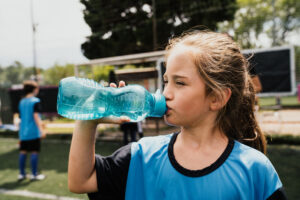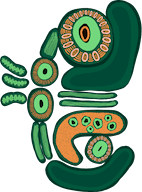
Tooth decay, also called caries, is a diet-related disease that damages teeth and, if untreated, can cause further problems. Babies and children are prone to tooth decay because the protective enamel coating on their teeth is thinner and softer than in adults’ teeth. As with adults, tooth decay happens when germs in the mouth create a sticky coating called plaque, on the tooth surface. Plaque feeds on sugars in food and drinks and creates acid which damages the tooth surface. Over time, this acid etches away at the protective coating of the tooth, causing a hole to developt1.
Bottles of milk, juice, or fluids other than water increase the risk of childhood dental decay. When a baby or child settles to sleep sucking on a bottle, their teeth are exposed to sugars which can build up on their teeth. During sleep, saliva flow slows down so there is less protection against decay. Some foods also increase the risk of tooth decay, particularly those which are sticky and sweet2.
Preventing childhood tooth decay
There are tips you can follow at each stage of your child’s teeth journey, but these need to start in the early months of life.
- Even before they have teeth, your baby can become used to having their gums and tongue gently cleaned with a damp washcloth.
- As their teeth appear, use a soft, child-size toothbrush. Introduce a child-strength fluoride toothpaste from 18 months of age and brush their teeth twice daily.
- Once your toddler has two teeth that touch, floss gently to remove food caught in between their teeth.
- Remember, children need their parent’s help to brush their teeth until they’re 8-9 years old. If your child shows interest in brushing their teeth, let them. But it’s important to check and do a quick once over as children don’t have the dexterity in their hands and wrist to do a thorough job at this age.
- Look after your own dental health to lessen the risk of passing on bacteria which cause tooth decay. Blowing on a child’s food to cool it down, ‘tasting’ food and then offering the same spoon and putting a dummy or teat in a parent’s mouth are all ways that cavity-causing bacteria can be transmitted.
Feeding habits to prevent tooth decay
Bottle caries is a common condition where a child’s upper front teeth (upper incisors) are exposed to sugars, causing acid attacks.
- Once your baby has finished feeding, remove the bottle from their mouth so their teeth aren’t continually exposed to lactose –milk sugar which can cause decay4.
- Avoid putting your baby or toddler to bed with a bottle of milk, fruit juice or cordial4.
- Start teaching your baby to drink from a cup from around 6 months old5.
- Offer tap water if your baby is thirsty and check to see if your water supply is fluoridated. Fluoride helps to strengthen tooth enamel and reduce the risk of tooth decay4.
How would I know my child has tooth decay?
Get into the habit of checking your child’s teeth each time you brush them. If you see any changes or anything unusual, book an appointment with your dentist. In the very early stages of decay, caries can be reversed, and teeth may be remineralised with dental treatment4.
Tooth decay can show as:
- A dull white band or white spots on the tooth surface closest to the gum line. This is the first sign of decay4.
- A yellow, brown, or black band on the tooth surface closest to the gum line4.
Dental checks for your child
We recommend that a baby’s first dental visit should occur around the time their first tooth erupts or at 1 year of age, whichever comes first4. Building a good relationship with your dentist early on helps children to become comfortable and develop trust. Guidance on keeping your child’s teeth healthy, as well as tips to prevent decay, will help to keep their mouth healthy. Book an appointment with your nib dentist today.
1Kids Health Information: Dental care (rch.org.au)
2Tooth decay: babies, children & teenagers | Raising Children Network




